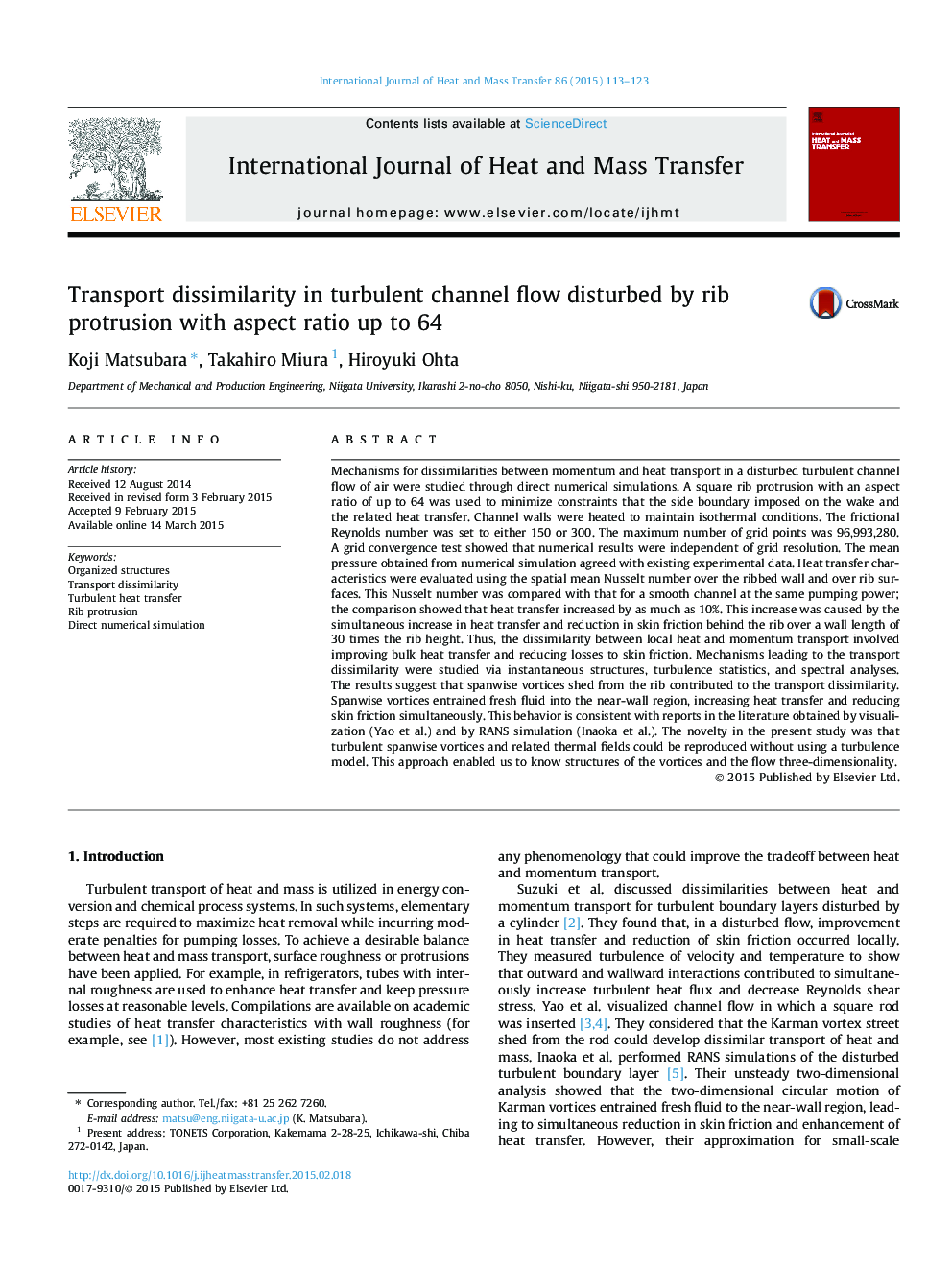| کد مقاله | کد نشریه | سال انتشار | مقاله انگلیسی | نسخه تمام متن |
|---|---|---|---|---|
| 656722 | 1458056 | 2015 | 11 صفحه PDF | دانلود رایگان |
Mechanisms for dissimilarities between momentum and heat transport in a disturbed turbulent channel flow of air were studied through direct numerical simulations. A square rib protrusion with an aspect ratio of up to 64 was used to minimize constraints that the side boundary imposed on the wake and the related heat transfer. Channel walls were heated to maintain isothermal conditions. The frictional Reynolds number was set to either 150 or 300. The maximum number of grid points was 96,993,280. A grid convergence test showed that numerical results were independent of grid resolution. The mean pressure obtained from numerical simulation agreed with existing experimental data. Heat transfer characteristics were evaluated using the spatial mean Nusselt number over the ribbed wall and over rib surfaces. This Nusselt number was compared with that for a smooth channel at the same pumping power; the comparison showed that heat transfer increased by as much as 10%. This increase was caused by the simultaneous increase in heat transfer and reduction in skin friction behind the rib over a wall length of 30 times the rib height. Thus, the dissimilarity between local heat and momentum transport involved improving bulk heat transfer and reducing losses to skin friction. Mechanisms leading to the transport dissimilarity were studied via instantaneous structures, turbulence statistics, and spectral analyses. The results suggest that spanwise vortices shed from the rib contributed to the transport dissimilarity. Spanwise vortices entrained fresh fluid into the near-wall region, increasing heat transfer and reducing skin friction simultaneously. This behavior is consistent with reports in the literature obtained by visualization (Yao et al.) and by RANS simulation (Inaoka et al.). The novelty in the present study was that turbulent spanwise vortices and related thermal fields could be reproduced without using a turbulence model. This approach enabled us to know structures of the vortices and the flow three-dimensionality.
Journal: International Journal of Heat and Mass Transfer - Volume 86, July 2015, Pages 113–123
